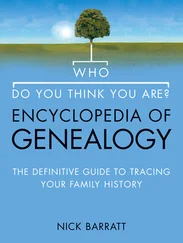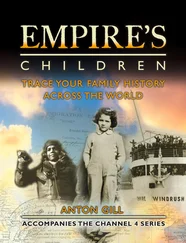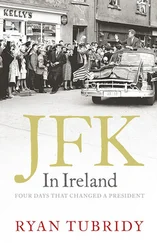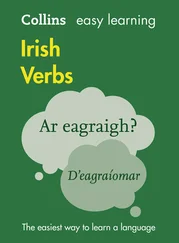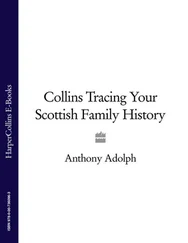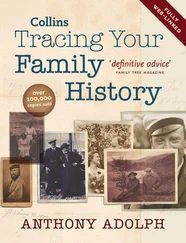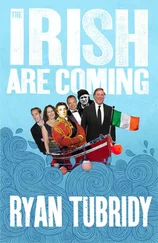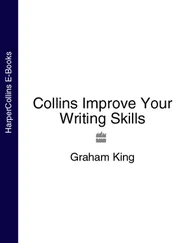Collins Tracing your Irish family history
Anthony Adolph

To Ann Lavelle, for Extraordinary Ancestors and everything else that followed as a consequence – and whose surname, incidentally, speaks eloquently of her family roots in Co. Mayo.
Cover Page
Title Page Collins Tracing your Irish family history Anthony Adolph
Dedication To Ann Lavelle, for Extraordinary Ancestors and everything else that followed as a consequence – and whose surname, incidentally, speaks eloquently of her family roots in Co. Mayo.
Foreword Foreword Recently, I interviewed an Irish economist who was explaining the phenomenal impact of the Irish in Britain. From Lennon/McCartney to Wayne Rooney and even Tony Blair, the Irish strain has always produced second and third generation performers. In London, some of the major landmark buildings are being snapped up by men who started life making tea on building sites off Regent Street. So, is this reverse-colonisation or just the natural upshot of an emigration-prone nation? In America, President John Fitzgerald Kennedy helped not only to put the emigrant Irish on the map but also to take them out of the ‘no dogs, no blacks, no Irish’ generation. Ever since, nearly every American president has found some class of connection to this small but beautiful island. As I write, Senator Hillary Clinton continues to parade her Irish roots and Barack Obama has claimed a bloodline to Co. Offaly. How times have changed in Ireland. There have always been Irish sons and daughters on the move in search of better times, but the great ‘brain drain’ that characterised generation after generation of migrants from the Famine to the dark economic days of the 1980s has now halted, thanks to the welcome appearance of peace in the 1990s. A new prosperity has stopped Irishmen and women leaving and brought many of them home to an emotional reunion with families who had expected empty places at the dinner table forever. With over 70 million people across the globe claiming Irish ancestry, the arrival of Anthony Adolph’s book couldn’t be timelier. A hotel in Dublin recently hired an archivist to help tourists trace their roots as part of the service provided. Such is the demand for and interest in the past that people feel the desire to investigate further. For those who can’t make it to Ireland or wish to research before they travel, this genealogical manual will do the trick. It’s accessible and helpful as it guides you through the potentially fraught route to your past. The importance of history and the respect that the author has for the past is evident on every page. Each of us has a story, first generation Irish and beyond, and here is an opportunity to shine a torch into the past and discover what lies beneath. Whatever you find, be it skeletons or gold dust, it promises to be a fascinating and enjoyable journey. Ad astra per ardua.
How to use this book
PART 1 Tracing Back to Ireland: First Steps
CHAPTER 1 First Find Your Immigrant
CHAPTER 2 Using and Storing Records
PART 2 Tracing Back to Ireland: Country by Country
CHAPTER 3 England and Wales
CHAPTER 4 Scotland
CHAPTER 5 United States of America
CHAPTER 6 Canada
CHAPTER 7 Argentina
CHAPTER 8 Australia
CHAPTER 9 New Zealand
PART 3 Tracing Your Roots in Ireland
CHAPTER 10 Introducing Ireland
CHAPTER 11 The Divisions of Ireland
CHAPTER 12 Griffith’s Valuation and Tithe Applotments
CHAPTER 13 Civil Registration
CHAPTER 14 Censuses
CHAPTER 15 Religious Registers
CHAPTER 16 Occupational Records
CHAPTER 17 Dictionary of Irish Sources
PART 4 Tracing Ancient Irish Roots
CHAPTER 18 Irish Names
CHAPTER 19 Recorded Pedigrees
CHAPTER 20 Heraldry
CHAPTER 21 Milesius was Your Ancestor
CHAPTER 22 Ancient Irish Roots
CHAPTER 23 The Invasions of Ireland
CHAPTER 24 Modern Chieftains
CHAPTER 25 Genetics
Useful Addresses
Index
Acknowledgements
Copyright
About the Publisher
Recently, I interviewed an Irish economist who was explaining the phenomenal impact of the Irish in Britain. From Lennon/McCartney to Wayne Rooney and even Tony Blair, the Irish strain has always produced second and third generation performers. In London, some of the major landmark buildings are being snapped up by men who started life making tea on building sites off Regent Street. So, is this reverse-colonisation or just the natural upshot of an emigration-prone nation?
In America, President John Fitzgerald Kennedy helped not only to put the emigrant Irish on the map but also to take them out of the ‘no dogs, no blacks, no Irish’ generation. Ever since, nearly every American president has found some class of connection to this small but beautiful island. As I write, Senator Hillary Clinton continues to parade her Irish roots and Barack Obama has claimed a bloodline to Co. Offaly.
How times have changed in Ireland. There have always been Irish sons and daughters on the move in search of better times, but the great ‘brain drain’ that characterised generation after generation of migrants from the Famine to the dark economic days of the 1980s has now halted, thanks to the welcome appearance of peace in the 1990s. A new prosperity has stopped Irishmen and women leaving and brought many of them home to an emotional reunion with families who had expected empty places at the dinner table forever.
With over 70 million people across the globe claiming Irish ancestry, the arrival of Anthony Adolph’s book couldn’t be timelier. A hotel in Dublin recently hired an archivist to help tourists trace their roots as part of the service provided. Such is the demand for and interest in the past that people feel the desire to investigate further. For those who can’t make it to Ireland or wish to research before they travel, this genealogical manual will do the trick. It’s accessible and helpful as it guides you through the potentially fraught route to your past. The importance of history and the respect that the author has for the past is evident on every page.
Each of us has a story, first generation Irish and beyond, and here is an opportunity to shine a torch into the past and discover what lies beneath. Whatever you find, be it skeletons or gold dust, it promises to be a fascinating and enjoyable journey. Ad astra per ardua.
This book is designed to help you trace your Irish roots back as far as they can go.
If you are living outside Ireland, the first task is to trace back to your Irish immigrant ancestor. Most people alive now with Irish roots live outside Ireland – mainly due to the mass migration of the 19th century, and in particular the Great Famine of the 1840s.
If you are using this book in Ireland, or already know your Irish place of origin, after reading part 1 of the book you may want to turn directly to part 3 (p. 72), where you’ll find resources for tracing ancestry within Ireland.
This book will be useful, too, for anyone wanting to trace relatives, because all Irish families, without exception, have cousins all over the world, from Britain to Argentina and Canada to New Zealand, often within only a handful of generations.
For many people, the most difficult step is finding where in Ireland your ancestors came from. If records in the country of migration don’t tell you, there are various techniques you can employ to ascertain the most likely areas – mainly by localising the surname and, now, seeking DNA matches. In most cases you will succeed. Then, you can explore your family using Irish records, seeking cousins, learning about your family’s social history, and tracing back as far as records allow. You may get back many centuries but, sadly, due to lack of records, many lines don’t go back much further than the early 19th century.
Читать дальше




